据浙江海事消息,2022年1月4日晚,巴拿马籍散货船“OCEAN LOONG”(海龙)与浙江温州籍渔船“浙苍渔00808”在温州外海专属经济区海域发生碰撞,渔船沉没。
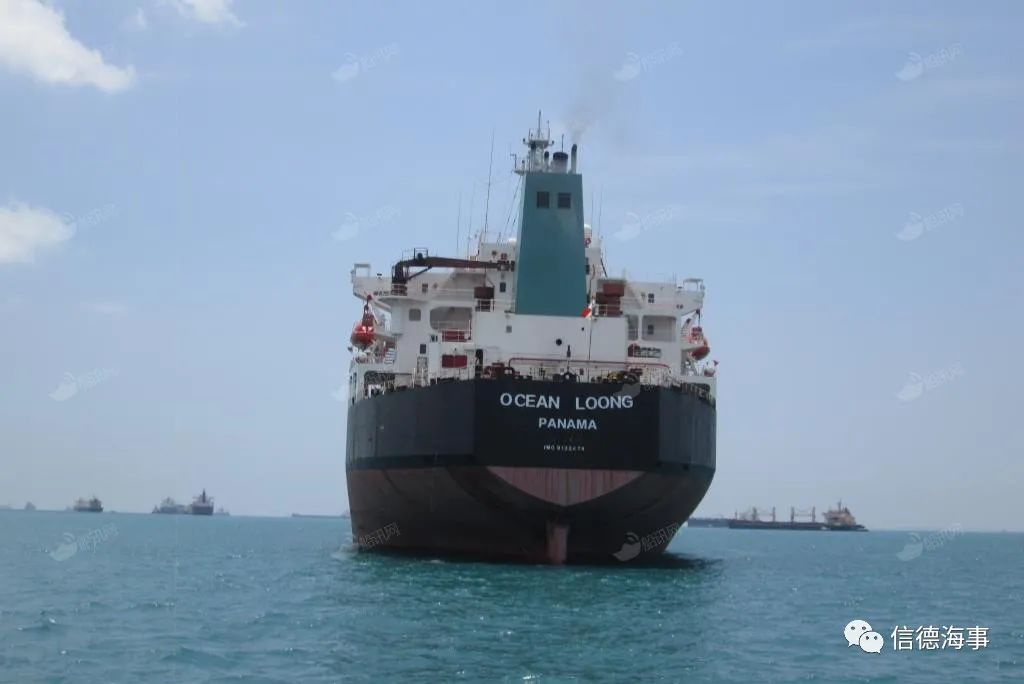
资料图 图片来源:船讯网
船讯网为信德海事网提供的该轮的资料显示,OCEAN LOONG轮为一艘7万吨级的巴拿马型干散货船舶。本航次该轮从越南前往岚山港。
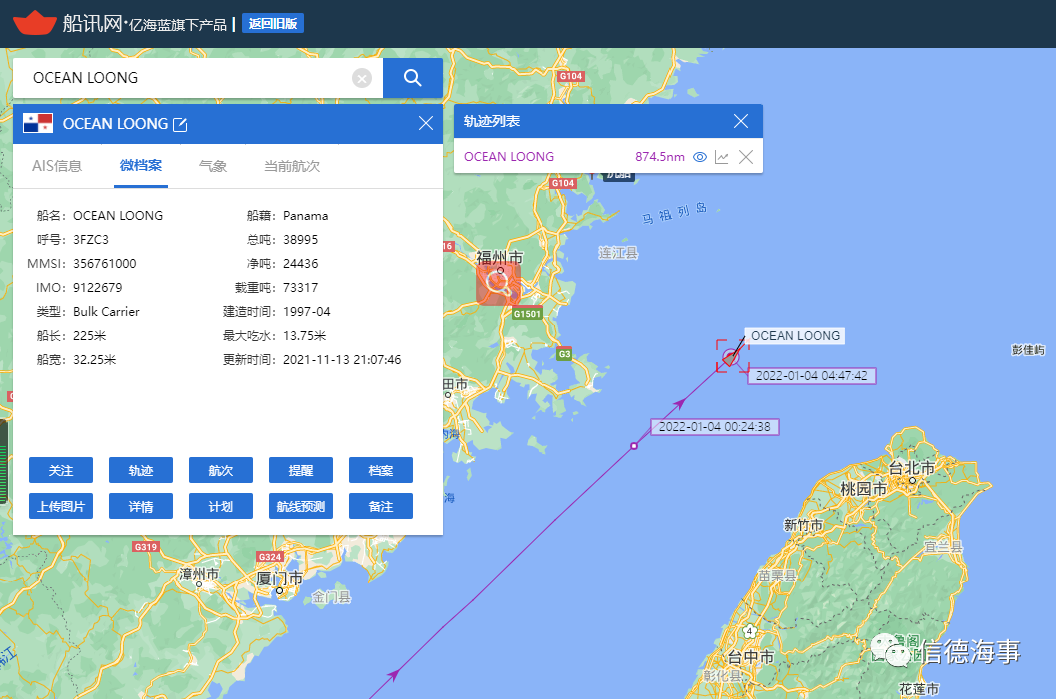
经核实,渔船船上共5人,均下落不明。
事发后,浙江省海上搜救中心立即启动搜救应急预案,迅速调派海事、渔政、东海救等部门救助船艇、飞机前往事发水域搜寻,同时播发航行警告,协调组织航经船舶开展搜寻。
截至1月5日08时,5人尚下落不明,搜寻工作仍在紧张进行中。
中国沿海航行船舶防范商渔船碰撞安全指引
来源:莆田海事局
近年来,我国沿海水域商渔船碰撞事故多发,造成了严重的人员伤亡和财产损失。为了进一步防范商渔船碰撞,船员们又有哪些需要注意的事项呢?
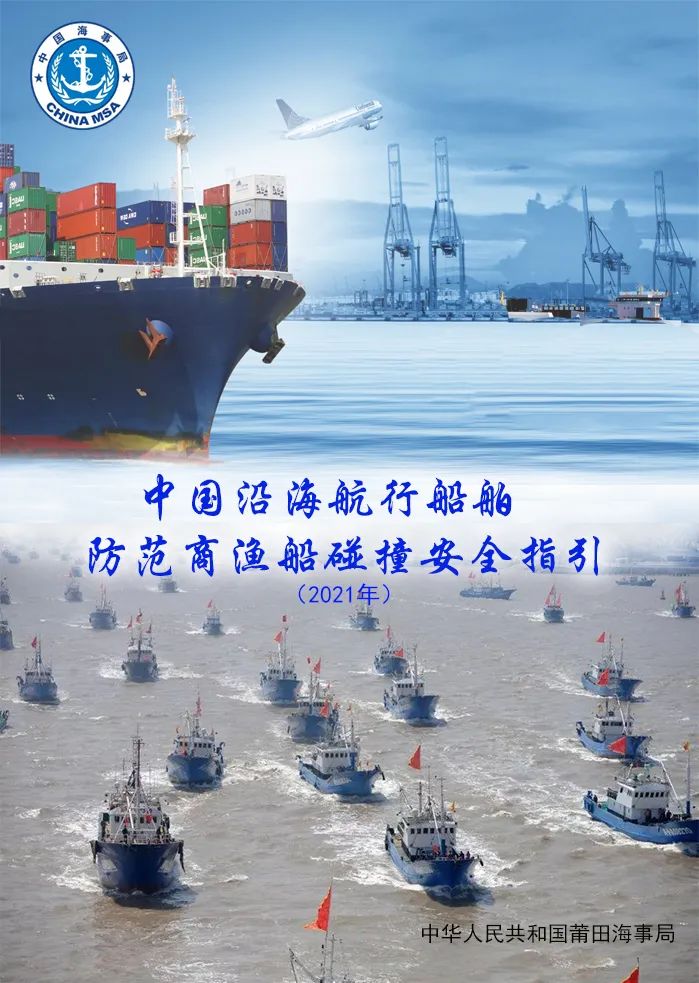
中国沿海航行船舶防范商渔船碰撞安全指引
(交通运输部海事局发布)
各有关船舶:
中国沿海水域渔业船舶活动频繁,气象条件复杂,商渔船碰撞事故多发,为保障航行安全,海事主管机关建议:
一、航行航法
图片
(一)进入渔船密集区水域之前
船长应严格审核计划航线,尽量使用推荐公共航路合理制定航线,尽可能避开渔船集中作业水域,减少与渔船相遇的机会。
对雷达、电子海图、AIS、VDR、VHF、航行灯和声号等设备进行检查和测试,确保正常可用。
合理安排驾驶台航行值班人员,任何时候驾驶台应保持至少2名航行值班和瞭望人员。
应在驾驶台显著位置标识渔区航行安全注意事项及相应行动对策。
(二)经过或邻近渔船密集区水域期间
驾驶人员谨记:安全第一、宁可绕行、不要冒险!尽可能避免冒险进入渔船密集区域航行!
合理安排值班人员,根据周围渔船密集程度和航行值班强度增加必要的航行值班人员,必要时应毫不犹豫立即呼叫船长上驾驶台指挥。
船长应针对夜间渔区航行的特殊戒备要求制定和发布夜航命令。
航行值班人员应加强瞭望,开启多台雷达工作,加强远近距离配合观测。勿过度依赖单一助航设备,每一船舶均应经常用视觉、听觉以及适合当时环境和情况下一切有效的手段保持正规瞭望。
使用安全航速航行。
确保AIS信息正确且工作正常。
杜绝疲劳驾驶、酒后驾驶。
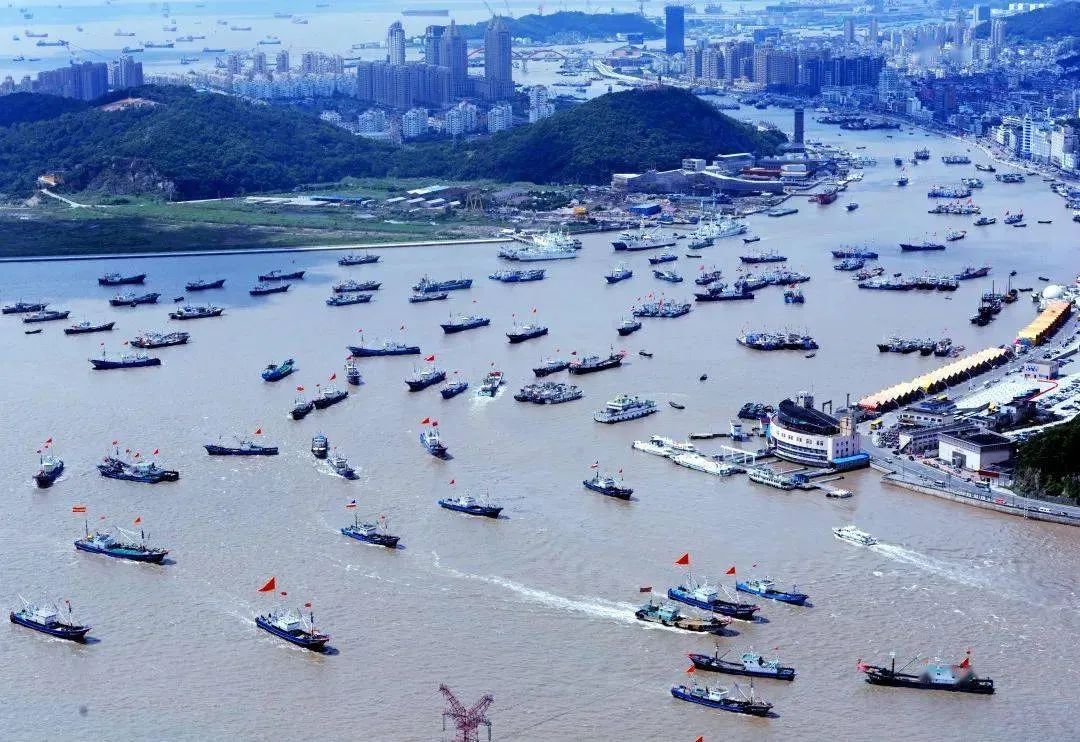
(三)应特别注意的事项
每年伏季休渔结束后,是中国沿海渔船活动密度最高时段。
夜间23时至次日凌晨4时是商渔船碰撞事故高发时段,应予以特别关注。
应特别注意部分夜间锚泊渔船可能未按要求值班、显示号灯和开启AIS。还要特别注意大量渔网网位仪对AIS、雷达回波和电子海图的使用干扰。
若观测到渔船船速在3节左右时,通常该渔船正在捕鱼作业中,操作能力受限,需要及早协调避让,最好保持1海里以上距离通过。
商船与渔船即使发生轻微擦碰也可能造成渔船受损或翻沉,并且商船上的人员可能不容易察觉。因此,当近距离驶过渔船时,应仔细观察,确保未发生擦碰、浪损或船吸。
建议从南海南部水域前往日本或韩国港口、不停靠中国大陆沿海港口的船舶从台湾岛东侧水域航行,并尽量远离中国大陆沿海水域。
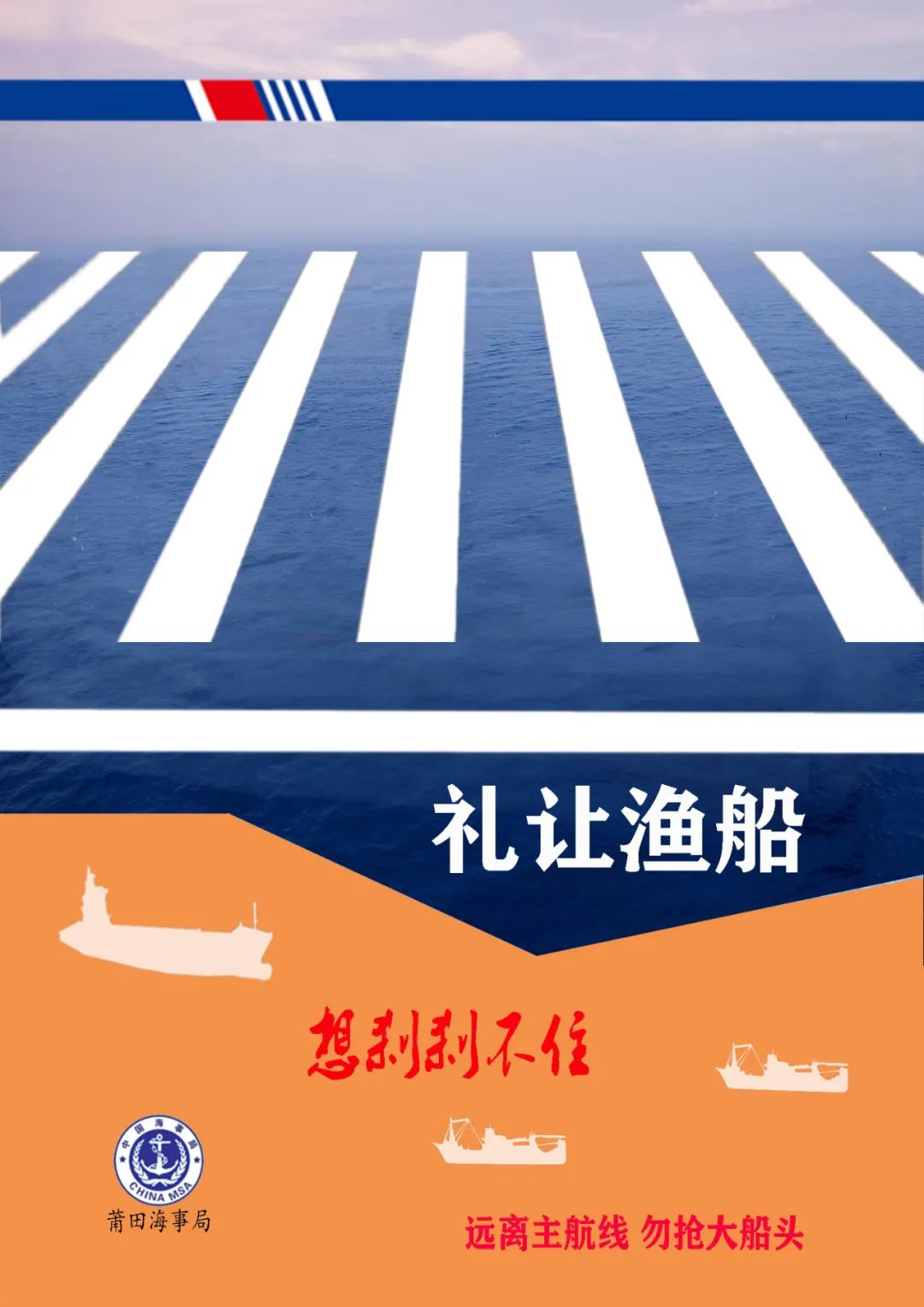
二、避让行动
图片
应遵守避碰规则,避让时坚持“早、大、宽、清”。尝试提前通过VHF16频道呼叫渔船,协调避让行动。若数次呼叫尝试无应答,可能意味着该渔船VHF未在守听状态。沟通时要充分考虑口音、语言表达等方面的局限,确保双方互相清楚对方意图。
警惕渔船近距离的不协调行动而发生碰撞。发现需紧急避让的渔船,可用探照灯闪烁至少5次,或用连续声号引起渔船注意。
紧急避让时,除用舵避让外,应同时考虑减速停车避让。
避让行动要充分考虑周围环境,以免造成与其他船舶的紧迫局面。
三、应急救助
图片
在碰撞不可避免时,应尽可能避免本船船首与渔船正面撞击。
发生碰撞事故后应立即停船,将人命救助置于首位,全力实施救助。全部遇险人员脱险前,只要不严重威及自身安全,严禁放弃搜救擅自驶离现场。在海上该行为意味着对他人生命的放弃,将面临法律的严惩!切莫心存侥幸,借助当前的技术手段,肇事逃逸船舶几乎都被追踪查获。
立即呼叫周边船舶参与救助。
通过一切有效途径,立即向就近的主管机关报告,报告内容包含事故发生位置、遇险船舶名称、人员伤亡情况、船舶受损情况、天气海况、救助需求等。
每位参加航行值班人员均应熟知上述内容。
SAFETY GUIDLINE FOR PREVENTING OF COLLISION BETWEEN MERCHANT VESSELS AND FISHING VESSELS IN CHINESE COASTAL WATERS
All relevant vessels:
Due to the exsitence of many fishing vessels and the complicated hydrometerological conditions, which have caused frequent collisions between merchant ships and fishing vessels in the China’s coastal waters, China MSA provides the following advice for the purpose of navigation safety:
1. Normal Navigational Methods
1.1 Before entering the waters where fishing vessels are concentrated
1.1.1 The captain should examine passage plan, as far as practicable adopt the recommended route and try the best to avoid entering the fishing vessels concentrated waters, so as to reduce the chance of encountering with fishing vessels.
1.1.2 Examine and test navigational aids and communication equipment such as RADAR, ECDIS/ECS, AIS, VDR, VHF, Navigational lights and sound-signalling equipment to ensure that all are in sound working condition.
1.1.3 Make proper arrangement on navigational watch. There should be at least 2 crew members engaged on the bridgewatch at all times.
1.1.4 Safety precautions and corresponding actions guide for navigating in the fishing area should be clearly posted at a prominent position on the bridge.
1.2 Navigating in or approaching to the waters where fishing vessels are concentrated
1.2.1 It should be borne in mind that: Safety First, Don't take risks, Take a detour! As far as practicable avoid entering the waters where fishing vessels are concentrated.
1.2.2 Appropriate bridge watch arrangement shall be made.The number of bridge team may be increased according to the high traffic density of fishing vessels. Don’t hesitate to call the captain to the bridge any time indoubt.
1.2.3 The captain should issue the night orders in response to the special precautionary requirements for the safe navigation in fishing area at the night time.
1.2.4 Bridge should keep sharp look-out, use two or more radars by long-range and short-range scanning. Do not rely too much on a single navigational aids, every vessel shall at all times maintain a proper look-out by sight and hearing as well as by all available means appropriate in the prevailing circumstances and conditions.
1.2.5 Proceed at a safe speed at all times.
1.2.6 Make sure the AIS information is updated and the device is in good working condition.
1.2.7 All measures shall be taken to avoid watchkeepers to work in fatigue or after drinking .
1.3 Special Precautions
1.3.1 When the summer fishing moratorium ends,usually it is the time when the density of fishing vessels is highest.
1.3.2 Based on accident statistics, most collisions between merchant vessels and fishing vessels occur in the period between 2300 and 0400.Therefore special attention should be given in this duration.
1.3.3 Special attention should also be paid to some fishing vessels anchored at night which might not arrange watchkeeper or display proper lights or have operational AIS as required, and also to the interference from the excessiveuse of AIS onfishing nets or fishing marks.
1.3.4 When a fishing vessel is observed proceeding at the speed around 3 knots, she is possibly engaged in fishing and restricted in her ability to manoeuvre, keep clear at a safe distance whenever possible.
1.3.5 Even a slight collision or contact between a merchant vessel and a fishing vessel might capsize the fishing vessel and cause subsequent damage to both the vessel and her crew. Howeverit is sometimes hard to be observed by watchkeepers on merchant vessesls. Therefore, When passing a fishing vessel at close range, great care should be taken to ensure that there is no collision, wave damage or vessel suction..
1.3.6 It is recommended that vessels sailing from the southern parts of the South China Sea to Japanese or Korean ports, and vessels that do not call at Chinese ports, proceed from the waters east of Taiwan Island and try to stay away from the coastal waters of China..
2. Action to Avoid Collision
2.1 Comply with the COLREG 1972.Any action to avoid collision shall be taken in ample time.The alteration of course and/or speed shall be large enough.Action taken to avoid collision shall be such as to result in passing at a safe distance until the other vessel is past and clear.Try to coordinate the collision avoidance actions through VHF CH16; however if there is no response from the fishing vessel after several calls, it might means that the fishing vessel does not maintain listening watch on such channel. When communicating with VHF, give a full consideration to the limitations of accent and language expressionand ensure that both parties are clear about their intentions.
2.2 Watch out for uncoordinated actions taken by fishing vessels at close range. When finding a fishing vessel that needs emergency collision avoidance actions, give at least 5 short and rapid flashes by ALDIS light, or use a continuous sound signal to attract her attention.
2.3 In an emergency situation, you should also consider reducing speed or stopping the vessel to avoid collision in addition to the alteration of course.
2.4 Action to avoid collision should decided giving fullconsiderations tothe surrounding conditions, so that such action will not result in any close-quarter situations with any other vessels.
3. Emergency Rescue
3.1 When a collision is unavoidable, it should be avoided as far as possible that the bow of your own vessel is heading to the fishing vessel.
3.2 The vessel should be stopped immediately after a collision. Life-saving rescue should be put at first priority and all endeavors shall be made to carry out the on-site rescueas long as your own safety is not severely threatened.It is strictly forbidden to give up search and rescue and leave the scene without authorization. Such behavior at sea means giving up the lives of others and will face severe punishment by law! Aided by the modern technology, almost all hit-and-run ships will be tracked down.
3.3 Immediately call the vessels in the vicinity to attend to the rescue operations.
3.4 By all effective means, report to the nearest competent authority immediately. The content of such reportshould include the location of the accident, the name of the vessel in distress, casualties, damage, weather and sea conditions, rescue needs, etc..
Every crew member on navigational duty should be familiar with the above information.
09-18 来源:信德海事网
10-10 来源:信德海事网 苏婉
05-07 来源:信德海事网
01-27 来源:信德海事网
12-21 来源:信德海事网
02-11 来源:信德海事网
09-24 来源:信德海事网
12-30 来源:信德海事网
01-08 来源:蓝盾安检创新工作室
06-30 来源:航运安全新动态